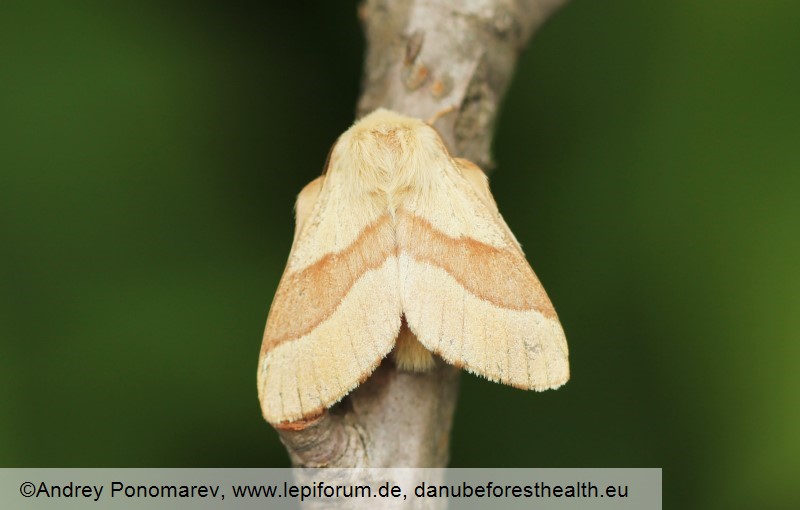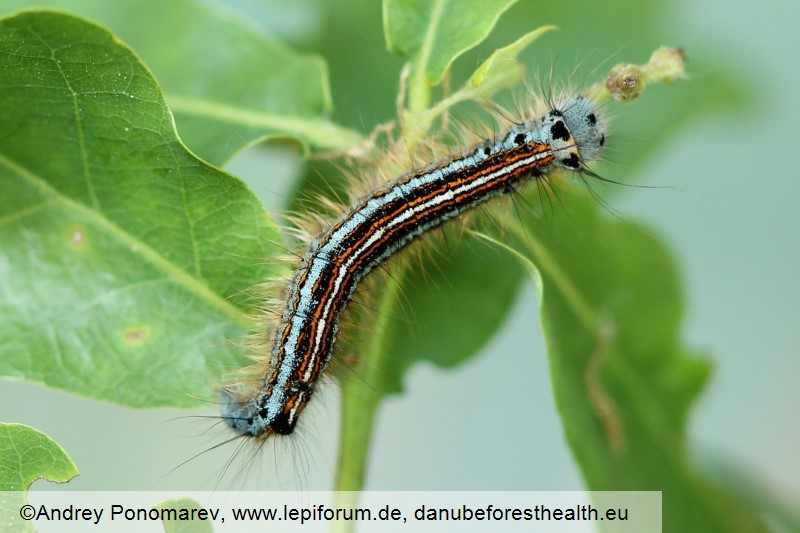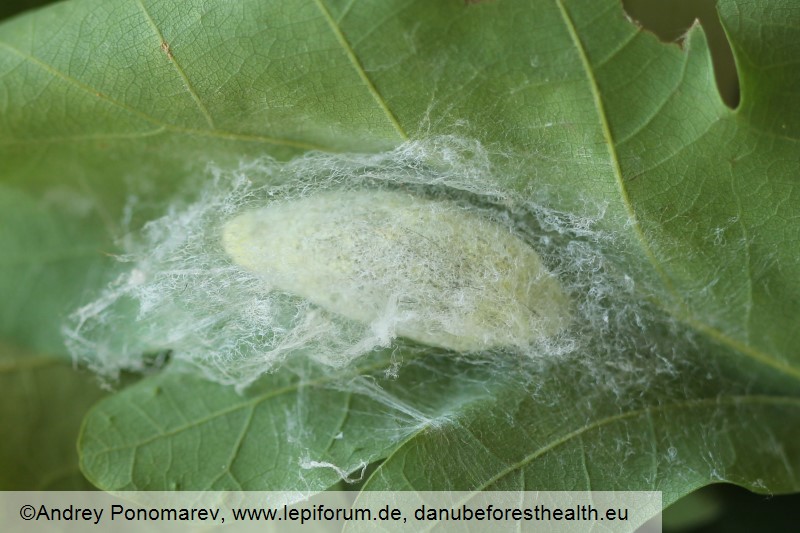Animalia
Lackey moth
Malacosoma neustria
Andreja Kavčič
|
|

Fig. 1. Malacosoma neustria adult

Fig. 2. Malacosoma neustria larva

Fig. 3. M. neustria egg mass forming a ring around a twig

Fig. 4. Malacosoma neustria pupa in a cocoon
DETECTION PERIOD:
April to September, eggs on twigs can be found from October to March
DESCRIPTION:
Adults vary in colour from creamy white, sandy yellow or brown to reddish. They have a wide bordered transverse band across the middle of each forewing. Males are smaller than females. Wingspan is 25–32 mm in males, and 38–42 in females. Adults emerge from June to September. A fertilized female lays eggs in clutches forming a ring around twigs. Eggs overwinter. Larvae hatch in April or May. At the beginning, they live gregariously in nests made of silky threads that they produce. Later they disperse and live singly. Larvae are hairy and have a blue head. Vivid white, orange, black and blue lines run along the dorsal side of the body. They grow to 50 mm. The larva pupates among the leaves in the understory, in a light cocoon made of silky web, in June. Pupa is dark brown and bare.
HABITAT:
Malacosoma neustria can be found in woody and non-forest areas, plantations, nurseries and urban areas. It is more common in warmer localities. Larvae feed on numerous broadleaved trees and shrubs, mostly on Malus spp., Pyrus spp., Salix spp., Carpinus spp., Tilia spp. and Quercus spp..
STATUS:
Malacosoma neustria occurs from North Africa, across Europe to East Asia. It is native in the ReFOCUS area, occasionally causing damage in orchards.
IMPACT:
Damage is caused by larvae that feed on leaves and cause defoliation. Young trees suffer the most from defoliation caused by Malacosoma neustria larvae. Nests and extensive webbing of the host plant are unsightly and decrease aesthetic value of host plants in urban areas.
SIMILAR SPECIES:
Adults are highly variable in colour and resemble other defoliating moths. Caterpillars can be reliably distinguished from other species by vivid white, orange, black and blue stripes that run along the dorsal side of the body.
|